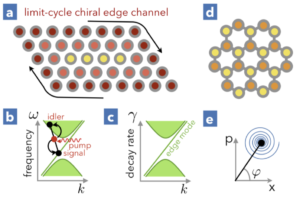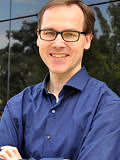D05 – Quantum Cooperativity and Synchronization
Summary
In this project, we propose to take the study of (quantum) synchronization into new directions, both in terms of the physical scenarios considered and in terms of the methods applied. Going beyond oscillators on simple lattices, we ask whether aspects of topological band structures and transport could be observed in synchronization, on only slightly more complicated lattices. We will introduce deep neural networks to study the complex phase patterns that can arise and we will consider coupled oscillator networks as potential new machine learning platforms. Finally, we will investigate possible experimental implementations of synchronization
Project Leaders
Florian Marquardt
Max Planck Institut für die Physik des Lichts
91058 Erlangen
- Phone number: +49 9131 7133400
- Email: florian.marquardt@mpl.mpg.de
Publications
No publications found.


